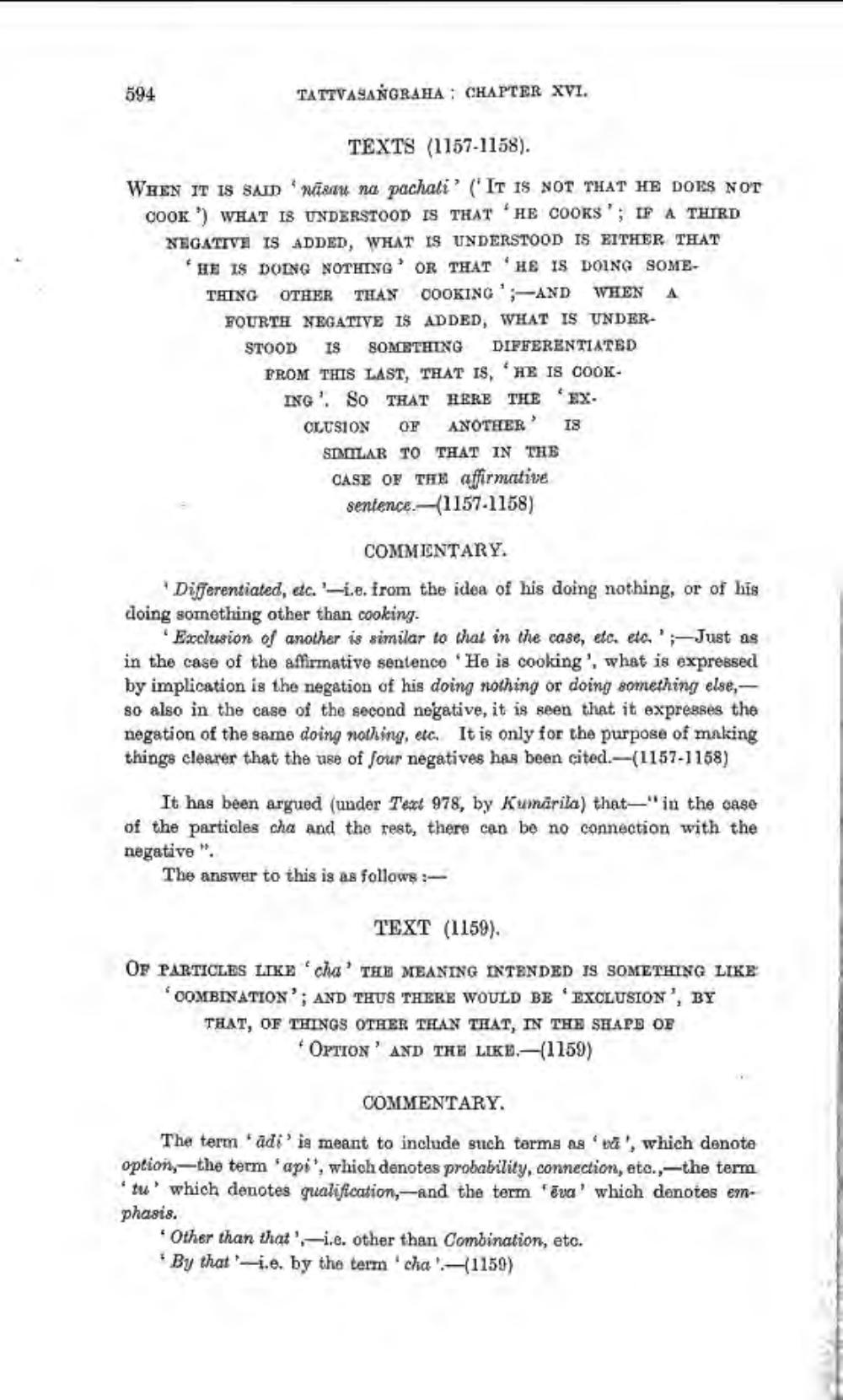________________
594
TATTVASANGRAHA: CHAPTER XVI.
TEXTS (1157-1158). WHEN IT IS SAID Wisnu na pachali' ('IT IS NOT THAT HE DOES NOT COOK) WHAT IS UNDERSTOOD IS THAT HE COOK'; IF A THIRD NEGATIVE IS ADDED, WHAT IS UNDERSTOOD IS EITHER THAT
HE IS DOING NOTHING OR THAT HE IS DOING SOMETHING OTHER THAN COOKING '; -AND WHEN A FOURTH NEGATIVE IS ADDED, WHAT IS UNDERSTOOD IS SOMETHING DIFFERENTIATED FROM THIS LAST, THAT IS, HE IS COOKING. SO THAT HERE THE EX. CLUSION OF ANOTHER' 18 STANLAR TO THAT IN THE CASE OF THB affirmative sentence.(1157-1158)
COMMENTARY.
Differentiated, ec. -i.e. from the idea of his doing nothing, or of his doing something other than cooking.
Exclusion of another is similar to that in the case, etc. etc. Just as in the case of the affirmative sentence 'He is cooking', what is expressed by implication is the negation of his doing nothing or doing something else, - so also in the case of the second negative, it is seen that it expresses the negation of the same doing nothing, etc. It is only for the purpose of making things clearer that the use of four negatives has been cited.-(1157-1158)
It has been argued (under Text 978, by Kumarila) that-"in the case of the particles cha and the rest, there can be no connection with the negative ".
The answer to this is as follows:
TEXT (1159). OF PARTICLES LIKEcho THE MEANING INTENDED IS SOMETHING LIKE
OOMBINATION'; AND THUS THERE WOULD BE EXCLUSION', BY THAT, OF THINGS OTHER THAN THAT, IN THE SHAPB OF
OPTION' AND THE LIK.-(1159)
COMMENTARY
The term 'adi' is meant to include such terms as 'd', which denote option, the term api.which denotes probability, connection, eto..the term 'tu' which denotes qualification, and the term fēva' which denotes emphasis.
Other than that', - i.e. Other than Combination, etc. * By that'-i.e. by the term 'cha'-(1159)




